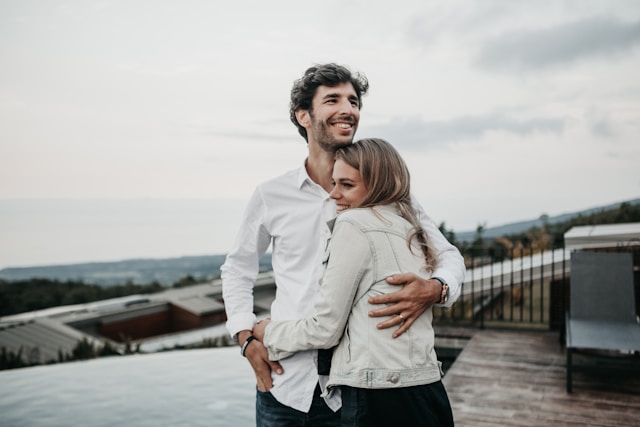Written by Michael LaPick
Healthcare Writer
We want to help you make educated healthcare decisions. While this post may have links to lead generation forms, this won’t influence our writing. We adhere to strict editorial standards to provide the most accurate and unbiased information.
What You Need to Know
- A premium is a set amount you pay monthly for insurance coverage.
- Lower premiums typically mean higher out-of-pocket costs.
- Average individual premiums range from $1,200 per year for employer-based insurance up to $6,000 for Health Insurance Marketplace plans. Depending on your household income and situation, you may qualify for lower premiums through government-sponsored programs.
Like monthly rent or mortgage payments for your home, health insurance premiums are the monthly cost of your coverage.
The premium refers to the set amount you pay no matter what services you use. Other healthcare costs vary depending on where you get care and who provides it.
Most people focus on insurance premiums because they’re a predictable cost. But there are many other healthcare costs. The premium is just one part of the total.
How Do Premiums Work?
What Is Cost Sharing?
Cost sharing means the share of costs for healthcare services that you pay yourself, as opposed to what your insurance company pays.
Cost sharing typically refers to out-of-pocket expenses like:
- Deductibles
- Coinsurance
- Copayments.
How Do Premiums Work with Cost Sharing?
Insurers try to set prices that will cover what they expect to pay for medical costs.
Like a water balloon whose contents move from one end to the other when you squeeze it, health insurance costs can shift from one element, like a monthly premium, to another, like a deductible.
Deductibles
A deductible is the first part of a medical bill that you pay before your insurance pays anything.
Typically, the higher your deductible amount, the lower your premium, and vice versa.
You trade a set cost (the premium) for potential, less predictable costs if you use services (the deductible). This trade-off can make economic sense if you’re likely to use a lot of services or if you prefer more certainty in healthcare payments.
Coinsurance
Coinsurance is the percent of medical bills you pay after you’ve met your deductible. Before then, you pay the whole amount. Coinsurance can be hard to calculate because you won’t always know the total bill until after you’ve had the service. Knowing the percentage you’ll owe, but not necessarily the total amount it’s applied to, makes it hard to predict coinsurance costs.
Typically, the higher your medical insurance premium, the less coinsurance you have to pay, and vice versa.
Copayment
Copayments are fixed fees you pay when you use services, after you’ve met your deductible.
Before then, you pay the full amount. Different services, providers, or types of visits require different copayment amounts.
Typically, the higher your premium, the lower your copayments, and vice versa.
Out-of-Pocket Maximum
Your out-of-pocket maximum is the most you’ll have to pay in a year for services your plan covers.
You reach the maximum through deductibles, coinsurance and copayments, but not premiums or payments for services or providers that aren’t covered by your plan. After you reach the maximum, your health plan pays 100% of covered services.
Usually, the higher your premium, the lower your out-of-pocket maximum, and vice versa.
Maximum amounts vary. If you buy a plan on your state or federal Health Insurance Marketplace, the out-of-pocket maximum can’t exceed $8,700 for an individual and $17,400 for a family in 2022.
What’s An Average Premium?
In 2020, medical premiums averaged $7,470 for individuals and $21,342 for families.
Employers paid most of that. Individuals and families paid 17% and 27%, or $104 and $466 per month, respectively.
Individuals who buy Marketplace plans pay the full premium themselves, an average of $328 to $482 per month in 2021.
The national average 2021 benchmark silver plan premium — the plan in your area the government uses to calculate premium tax credits if you qualify — for a 40-year-old was $452 per month.
In Colorado, the average was $351 and in Connecticut, $580.
How Are Premiums Calculated?
The Affordable Care Act (ACA, or Obamacare) limits what insurance companies can base prices on to these factors.
- Age: Older people can only be charged three times more than younger people.
- Location: Medical costs vary greatly from one location to another.
- Tobacco Use: If you smoke, your premium can be up to 50% more.
- Plan Type: Individual and family premiums vary because of the number of people covered. Premiums also vary based on the metallic tier, which determines the level of covered benefits.
Insurers can’t charge men and women different rates, and can’t charge more for people with preexisting conditions.
How Can You Save on Your Premiums?
Health insurance can be expensive, but paying a lower premium can cost you more in out-of-pocket expenses.
If you can’t afford premiums at all, you might qualify for a subsidized public program.
ACA Subsidies
The ACA makes premiums more affordable for low- and moderate-income people in two ways:
Premium tax credits lower premiums for standardized Marketplace plans in any metallic tier (bronze, silver, gold, or platinum). To qualify, you must be a U.S. citizen or legal resident and have no other access to affordable health insurance.
The 2021 American Rescue Plan changed income requirements for subsidies. To qualify for help, you must pay more than 8.5% of your annual household income for a benchmark silver plan.
You can get the tax credit before you file taxes to lower premium payments, or as a credit when you file taxes.
Cost-sharing subsidies lower out-of-pocket costs for people who qualify based on household income, reducing the out-of-pocket maximum to between $2,850 and $6,800 for individuals, based on income. These subsidies only apply to silver plans purchased on the Marketplace.
Medicaid
Medicaid — government-sponsored health insurance for low-income and disabled Americans — covers one in five Americans.
It operates as a federal-state partnership. States oversee their programs, so eligibility rules can vary by location.
As part of the ACA, 39 states expanded their Medicaid eligibility rules to cover more people based on income.
Depending on where you live and how much you earn, you might qualify for Medicaid’s comprehensive, free or low-cost benefits.
Next Steps
When you’re shopping for health insurance, don’t just focus on the premium. Remember that your other costs matter, too.
Recognize the trade-offs you’ll have to make. Do you prefer a set cost even if that costs more per month? Or would you rather pay less per month, knowing that you could have to pay more for services?
You can’t predict exactly how much medical care you’ll use, but decide what you’re comfortable with and how much of a premium you want to pay, based on your needs. Then, research insurance companies and sign up for a plan that works for you.
Thank you for your feedback!







